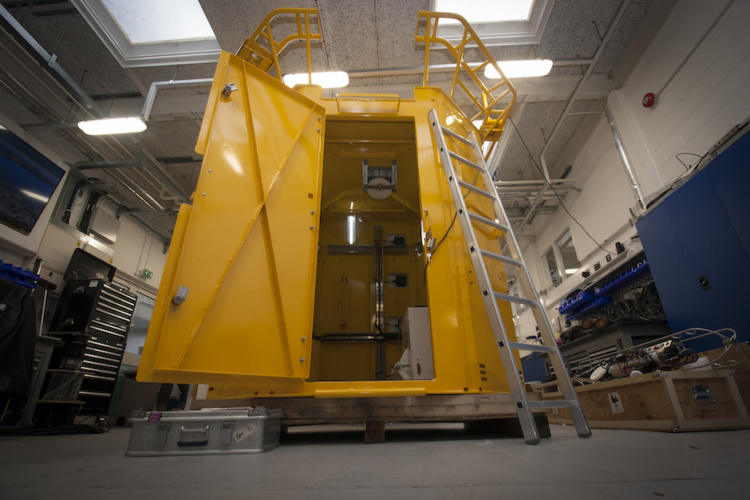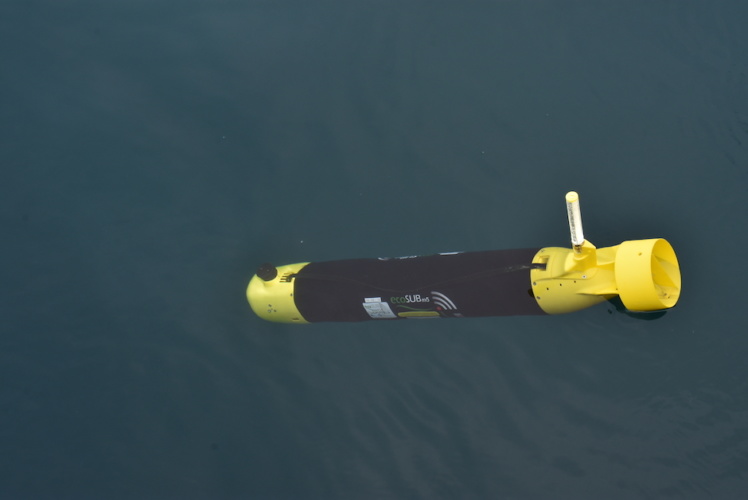Smart Sound Plymouth is a platform created for developing high-tech products and services for the marine sector. It is delivered by a range of partners from the Future Autonomous at Sea Technologies (FAST) Cluster, which includes members across industry, academia and government. The area stretches over 1000km2 of ocean and is home to the Western Channel Observatory.
With support from the European Regional Development Fund (ERDF), an 8.5-metre-tall Autonomous Data Buoy will be deployed by PML to deliver high-resolution data to scientists working on the Western Channel Observatory through its autonomous water column profiling system.
PML said that where previous buoy systems only measured in surface waters, the new profiled datasets will deliver an ‘unprecedented understanding’ of the area and its marine ecosystem. The platform was built by Mobilis and provided through Hydrosphere UK.

Alongside the buoy, Smart Sound's autonomous fleet will include the PML Pioneer, a five-metre AutoNaut uncrewed surface vessel propelled by wave motion and powered by three hundred-watt solar panels.
Plymouth Sound becomes proving ground for autonomous marine vessels
Marine-i and Feritech to develop geotechnical AUV
Funded by the Natural Environment Research Council (NERC), the PML Pioneer is one of two of its kind in the UK and will be the only one to be regularly deployed in UK waters, PML confirmed. Described as the most advanced to be deployed from an AutoNaut, the scientific payload includes chemical sensors and a photosynthetic efficiency and rate sensor.
PML has also procured four autonomous underwater robots from ecoSUB robotics with funding from NERC. Integrated together using acoustic underwater communications, the subs have been designed to be able to perform multi-vehicle synchronised surveys with accurate underwater positioning and will communicate with the PML Pioneer.

“The combination of the new data buoy and autonomous vehicles will give us unrivalled capabilities for this type of ocean observation,” said Dr James Fishwick, head of Smart Sound Plymouth and head of operations and technology at Western Channel Observatory. “It’s a great example of UK tech and innovation, a success story for Plymouth as a hub for marine research and an opportunity to showcase how we can monitor the environment in a net zero future.”
The fleet is supported by ‘Smart Sound Connect’, a £1.8m investment to deliver a high-speed above water communications network. The 5G network will extend over one mile south of Plymouth Sound and cover the port of Plymouth. Meanwhile, ‘Smart Sound Connect - Offshore’ will deliver high-speed communications across the full extent of Smart Sound, some 20 miles south of Plymouth. The private marine broadband network will provide seamless integration into the 5G network.
Smart Sound Connect is funded through the Local Enterprise Partnership (Heart of the South West LEP) and delivered through the Marine Business Technology Centre, Plymouth. ‘Smart Sound Digital’ will draw on the data transmitted across the system to deliver a ‘digital twin’ of the Smart Sound.





Nanogenerator consumes CO2 to generate electricity
Whoopee, they've solved how to keep a light on but not a lot else.